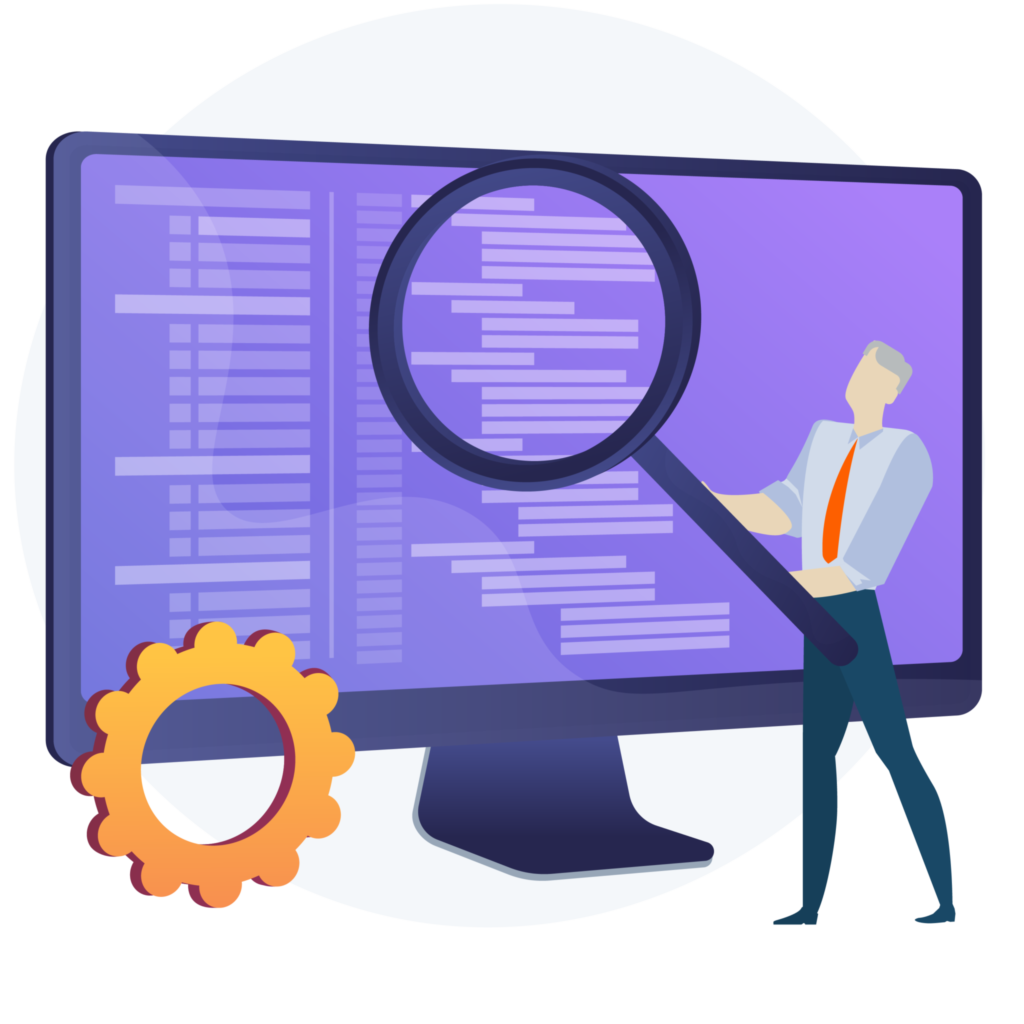Table of Contents
What is P2P: Procure to Pay?
Nobody wants to spend time on monotonous, administrative assignments. The procure-to-pay process is packed with huge volumes of paperwork, back and forths, process bottlenecks, compliance concerns, and time-consuming duties.
Procure-to-pay (P2P) is the process of requesting, buying, receiving, paying for, and accounting for goods. Incorporating the complete process from order to payment. The traditional P2P process consists of copious amounts of paperwork, back and forth bottlenecks, and time-consuming assignments, this creates a cocktail of monotony, human error, and unnecessary costs.
The right software solutions automate all repetitive and time-consuming tasks in the procure-to-pay process. Let’s take a look at how!
PunchOut Website: The End to End 7 Step Process
With Automation
Step 1:
Customer contacts supplier by visiting their website portal using a SSO & PunchOut catalogs
Step 2:
Client finds a product and shows it on the website – either with price or ‘contact us for a quote’
Step 3:
Supplier sends a quote or the website displays the price, this takes them through to checkout
Step 4:
Customer raises a PO Automatically send it to the supplier system (in-house ERM/CRM)
Step 5:
Supplier accepts order automatically
Step 6:
Supplier ships order with automatic notification to customer
Step 7:
Supplier raises an invoice by automatically sending it to customer accounts system (eg. Ariba)
Without Automation
Step 1:
Customer contacts supplier manually by phoning or emailing them and awaiting a reply
Step 2:
Client manually talks to their suppliers for a custom product and waits for a reply
Step 3:
The Supplier emails a quote and waits for a reply from the merchandiser
Step 4:
Customer raises a PO by emailing it to supplier and waits for a reply
Step 5:
Supplier accepts order via email or phone acknowledgement
Step 6:
Supplier ships order & warehouse staff update manually
Step 7:
Supplier raises an invoice by emailing it to customer
Key Benefits of P2P automation With a PunchOut Website
- Send your Non-catalogue / Bespoke quotes directly to customer systems
- No more passwords – customers can link directly from their Intranet to your website
- Delivery notifications and Proof-of-Delivery automatically available to customers
- Gives you the capability to win larger customers who require integration
- Handle more sales without increasing your workload
- Send your Non-catalogue / Bespoke quotes directly to customer systems
Bespoke quotes directly to customer systems
Traditionally the supplier sends a quote or the website displays the price, this takes them through to checkout. Customers can then:
- Pay via company credit card
- Send a quote via a PunchOut catalog system
Website portals save supplier time because they can get a quote straight from the portal. Suppliers find their products and don’t need to talk to their supplier to get a quote, instead they simply return to PunchOut which automatically creates all paperwork, saving massive amounts of administrative effort and reduces human error to nothing.
No more passwords – customers can link direct from their Intranet to your PunchOut website
With a single sign on your clients can use their own internal login to access your website portal. This not only allows for faster buying cycles, it also means suppliers no longer have to store and manage thousands of user accounts, massively reducing administrative burdens and helps GDPR efforts as sensitive information is the responsibility of the customer themselves.
Delivery notifications and Proof-of-Delivery automatically available to customers
Part of the administrative role is managing delivery notes and drivers. Traditionally drivers would take photos of POD notes, however this can often be a slow process and communication with the delivery team can take time. Through automation, POD can be displayed on the users account, meaning there is no need to phone up delivery drivers and chase if somethings been done. The ability to monitor important information in real-time allows for quick detection of potential problems within the assigned job.
Gives you the capability to win larger customers who require integration
Merchandisers can comply with client’s needs and connect their store directly with customer e-Procurement platforms such as SAP Ariba and Coupa via a PunchOut catalog. The majority of lucrative clients work with e-Procurement as standard, and merchandisers become eligible for large corporate contracts by complying with strict automation and integration requirements.
Handle more sales without increasing your workload
All varieties of invoices (including paper, PDF, fax, XML, and email) can be automatically captured through automation. Touchless processing for most invoices signifies that only exemptions need to be handled by physical staff. Problems such as duplicate invoices and absent PO numbers are stopped at the source before causing greater complications and further work later on. This reduced workload along with additional time saving automation means staff can focus on generating more revenue, without an overwhelming amount of paperwork to accompany it.
Send your Non-catalogue / Bespoke quotes directly to customer systems
PunchOut Hub connects purchasing systems such as Coupa with company portals, creating a PunchOut catalog. It’s extremely easy for the user; they click through from the purchasing system straight to the website, see stock levels, choose products, and that creates a purchase requisition on the merchandiser’s side. The customer can then submit the requisition, The merchandiser’s finance dept gets notified automatically, and provided it’s within the customers budget, it’ll get approved and sent through electronically as a PO. Simple!
Additional benefits
Save Employee Time
Automation of the P2P process will eliminate all manual tasks involving data entry and the basic transfer of information. This recovers man-hours to the business and allows employees to put more time into value-creating activities.
Visibility
Automation of the P2P process will eliminate all manual tasks involving data entry and the basic transfer of information. This recovers man-hours to the business and allows employees to put more time into value-creating activities.
Decreasing human error
In addition to time-saving opportunities, the risk of human error is dramatically diminished. Human error without an automated P2P process comprises; duplicate invoicing, incorrect payments, or paying the incorrect suppliers. In instances where the process is entirely automated, human error is fully eradicated. By automating human tasks your business can create a leaner supply chain with fewer overheads, faster decision making, and remove redundant roles and tasks.
ERP Integration
P2P automation software integrates with an organization’s existing ERP system. This ensures full clarity of the entire P2P process along with an audit trail for every transaction. Reporting analytics enables the continuous monitoring and of the operational P2P processes while also delivering timely and accurate month-end reporting.
Boosting productivity is significant, though it’s the financial impact that makes P2P automation a vital project for your business. By reaching all-new degrees of efficiency and removing redundant costs, your business can achieve a full ROI in minimal time.
Best of all, once automation has been incorporated into a department, it can be applied to essentially any department that deals with paper or manual processes.











